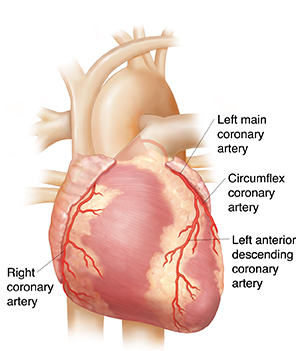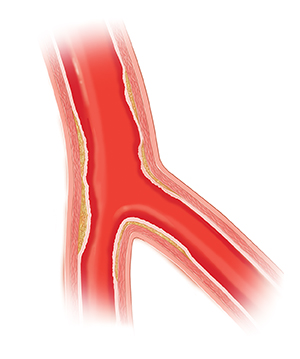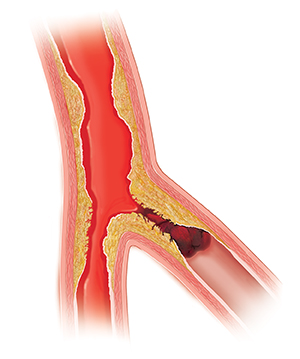Understanding Coronary Artery Disease (CAD)
Your heart is a muscle. To work right, this muscle needs a steady supply of oxygen. The coronary arteries are blood vessels that send oxygen-rich blood to the heart muscle. Coronary artery disease (CAD) is when there’s a problem in these blood vessels.

Healthy artery. A healthy coronary artery has no blockages. Blood easily flows through it. Healthy arteries can supply all the oxygen-rich blood your heart muscle needs.
 |
| Healthy artery. |
Damaged artery. Some things can damage the lining of an artery. These include smoking, high blood pressure, and high blood sugar. CAD starts when this damage leads to the buildup of plaque along the artery wall. Plaque is a substance made of cholesterol and other fatty deposits. Plaque narrows the arteries that send blood to your heart muscle. This is called atherosclerosis.
 |
| Damaged artery. |
Narrowed artery. As more plaque builds up, an artery has trouble sending blood to your heart muscle when it's needed the most, such as during exercise. You may not feel any symptoms when this happens. Or you may feel pressure, tightness, aching, or pain in your chest, jaw, neck, back, or arm. This is called angina.
 |
| Narrowed artery. |
Blocked artery. A piece of plaque can break off. This is called ruptured plaque. It can fully block the artery. But more often, a blood clot forms on a piece of ruptured plaque. Together these block the narrowed artery. Then blood can't reach the heart muscle. Right away, part of the heart muscle becomes damaged and stops working. You may feel crushing pressure or pain in or around your chest. This is a heart attack (acute myocardial infarction). It’s a medical emergency.
 |
| Blocked artery. |